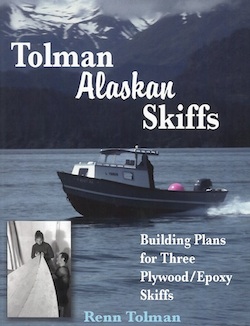Yesterday morning, I pulled my camel-colored wool coat from the closet for the first time this season. A simple act in the past, this was a terrible decision.
I moved Down East about two months ago, to work as an editor for Professional BoatBuilder magazine in Brooklin, Maine. From my former home of Portland, Maine, Brooklin is about three hours away, northeast — and then south down one of the fingers of land that hang from Maine’s coast. This peninsula is thick with deer, and hunting season is about to start (it began already with a youth hunting day last Saturday). Wearing a light brown coat would be practically suicidal.
Life is different. I’m adjusting to a new job, new home, and new people. But I haven’t left everything behind, including blogging for National Fisherman. As an editor for a heavily technical journal about boats, I’m privileged to learn about the latest developments in design, building techniques, materials, systems and propulsion. When it’s relevant to the commercial fishing industry, I’m happy to share.
Renn Tolman’s move was much greater than mine, and his adjustments made lasting impacts on boatbuilding and commercial fishing. He grew up in New Hampshire then headed west, eventually making his way to Homer, Alaska. When he got there, in 1971, his first boat was a double-ended dory he called “wonderfully seaworthy,” but also the slowest boat on Kachemak Bay. He sold that dory and decided to build a Carolina Dory Skiff, which traded the former’s sluggishness for an unstable, wet ride. He began a quest to design and build what he called a “proper skiff.”
Even if you haven’t heard of Tolman, you’ve seen the result of this quest. “These skiffs, which became known simply as Tolman skiffs, were the thing to have if you were a setnet fisherman in Alaska,” wrote NF North Pacific Bureau Chief Charlie Ess in “Reflections in wood” (National Fisherman, April 2011). According to Ess, Tolman built 103 skiffs of his own design (which included the standard, wide body and jumbo models) before retiring from boatbuilding in 2000. Tolman also gave amateur boatbuilders the tools to make their own, publishing “A Skiff For All Seasons: How to Build an Alaskan Skiff” in 1992, which was updated and reprinted as “Tolman Alaska Skiffs: Building Plans for Three Plywood/Epoxy Skiffs” in 2003.
Tolman died in July 2014 at the age of 80. You can read more about his work in “Renn Tolman and his high-endurance skiff” on Professional BoatBuilder’s website. For me, part of his legacy is a reminder that a big change can also be a blessing. It depends on what you make of it.







